Fig.
1 - Cover
of the paper of the Architecture Gallery with the first and the last
exhibition at the Masieri Foundation in Venice: Ignazio Gardella, the
railway station of Lambrate e Manuel de Solà Morales,
“El
Mol de La Fusta” in Barcelona.
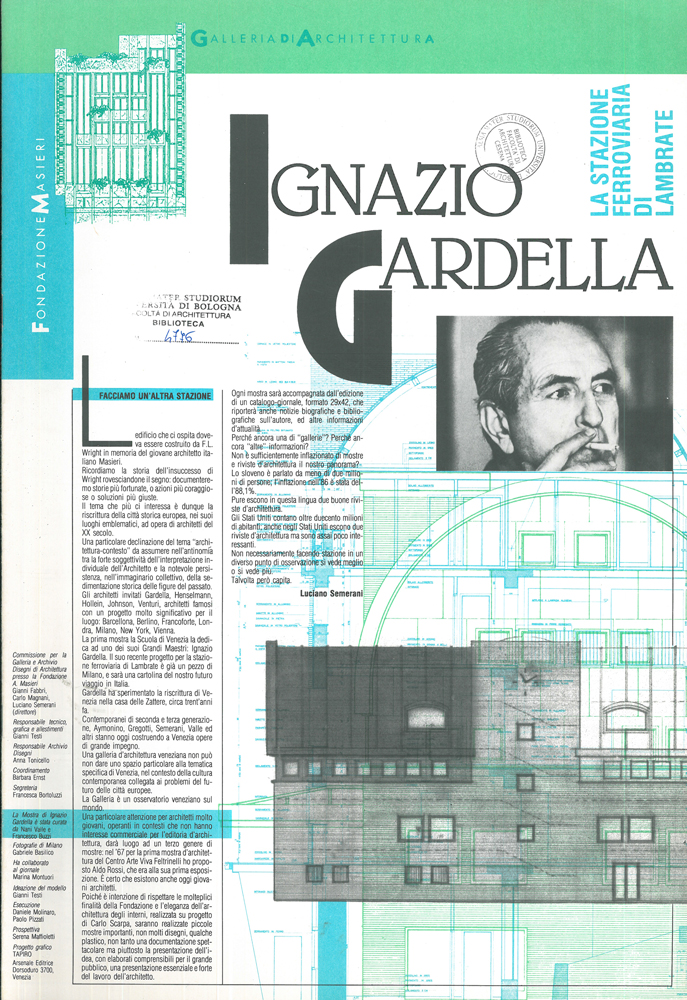
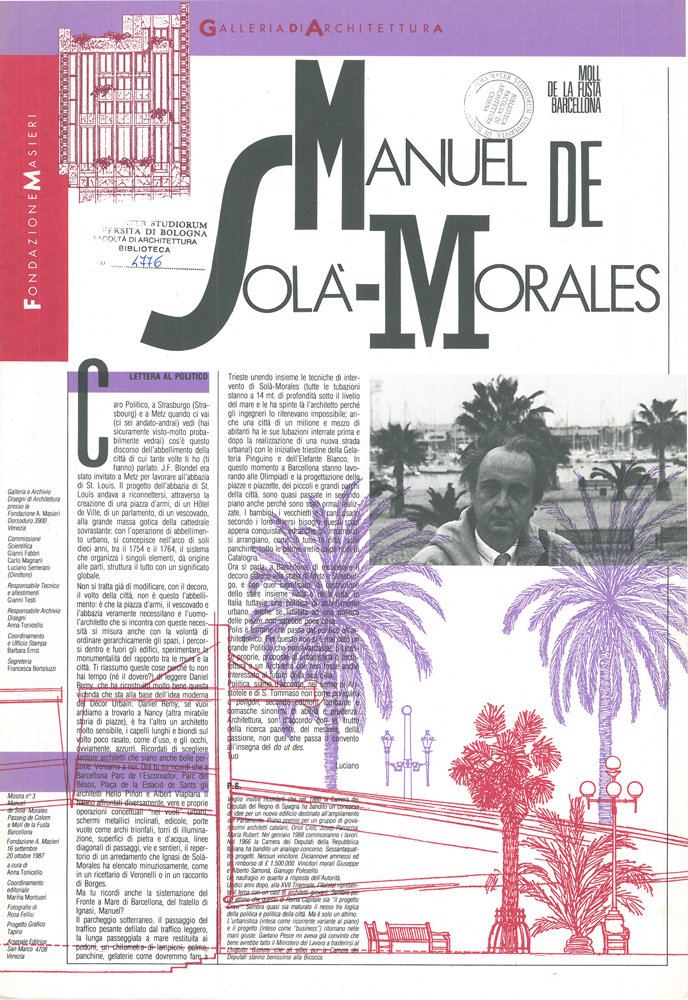
Fig.
2 - Cover of Phalaris 0
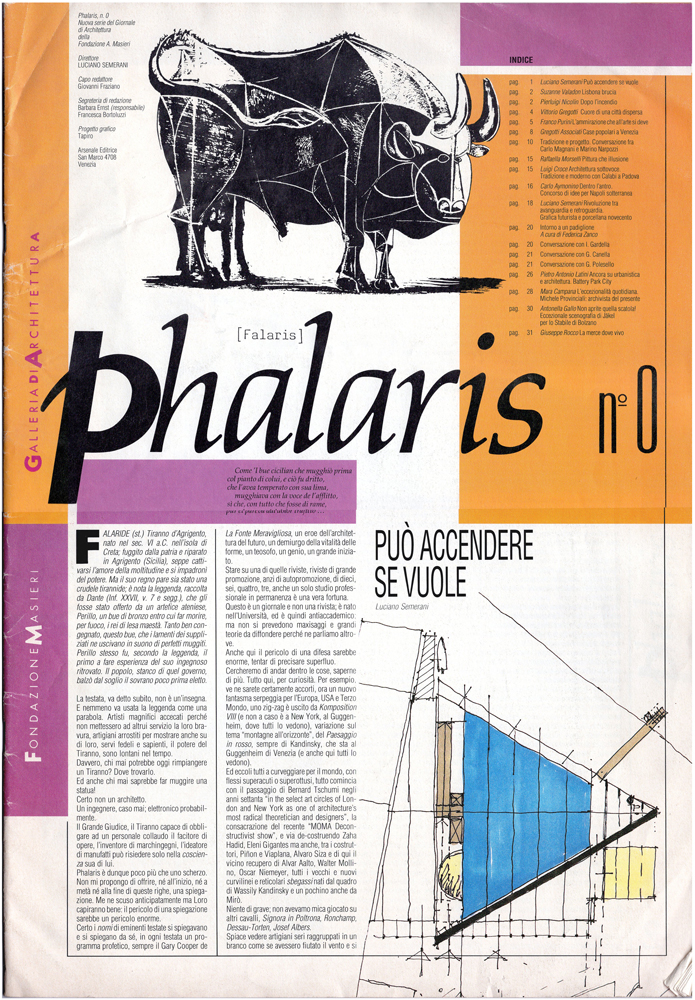
Fig.
3 - Cover of Phalaris 1
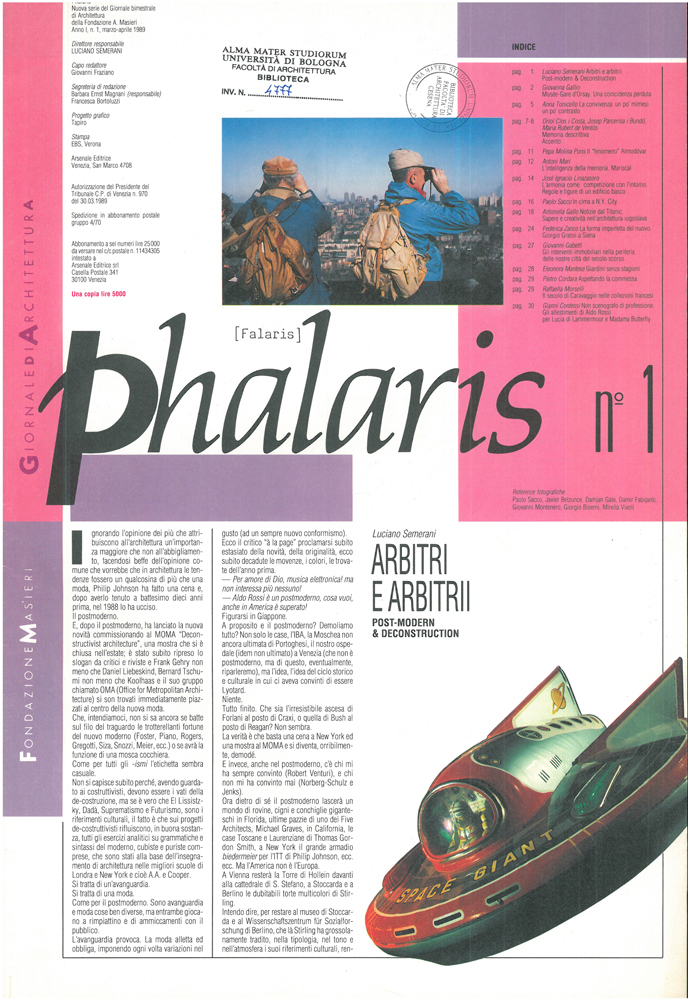
Fig.
4 - Cover of Phalaris 2
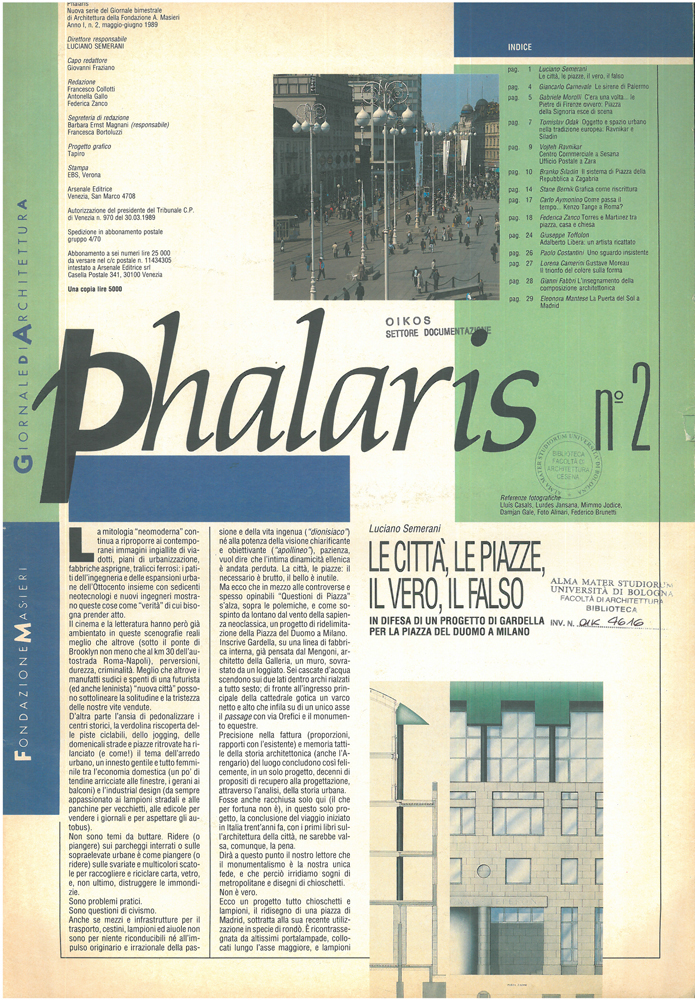
Fig.
5 - Cover of Phalaris 6 dedicated to Creative Restoration and Philological Restoration debate
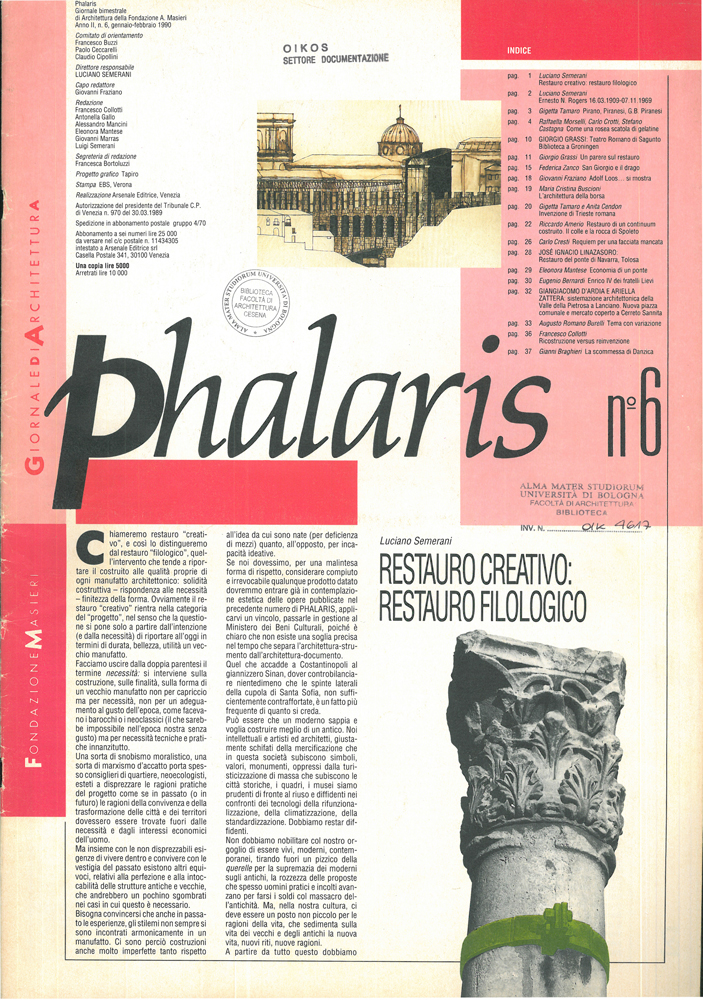
Fig.
6 - Cover of Phalaris 10
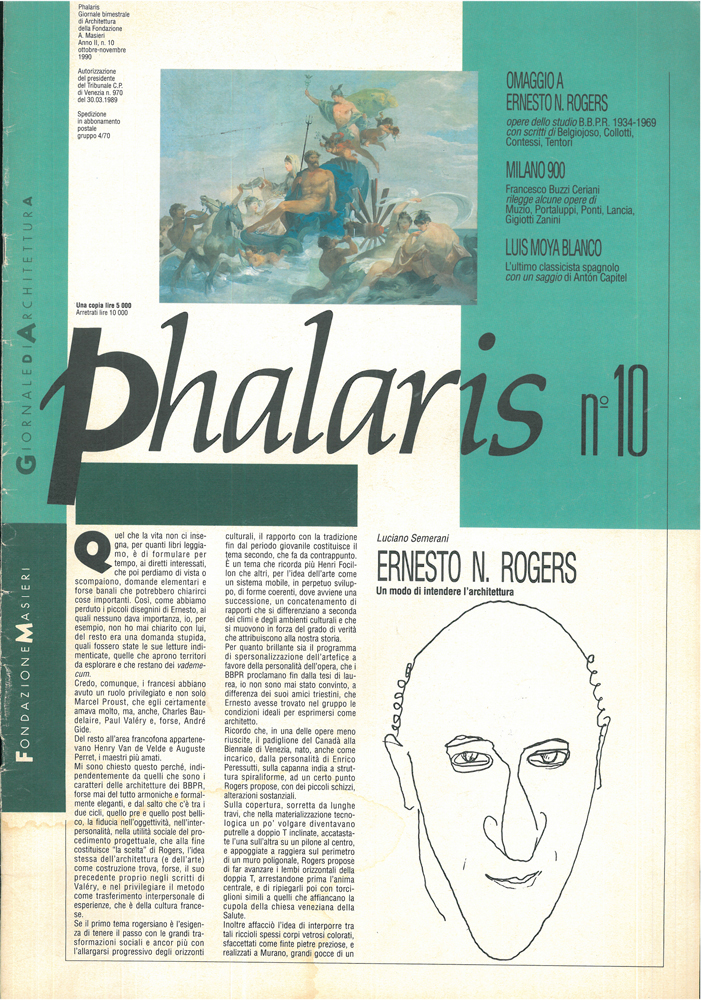
Fig.
7 - Cover of Phalaris 11 dedicated to Architecture of the Pleasure: amusement parks, caffè, hotels.
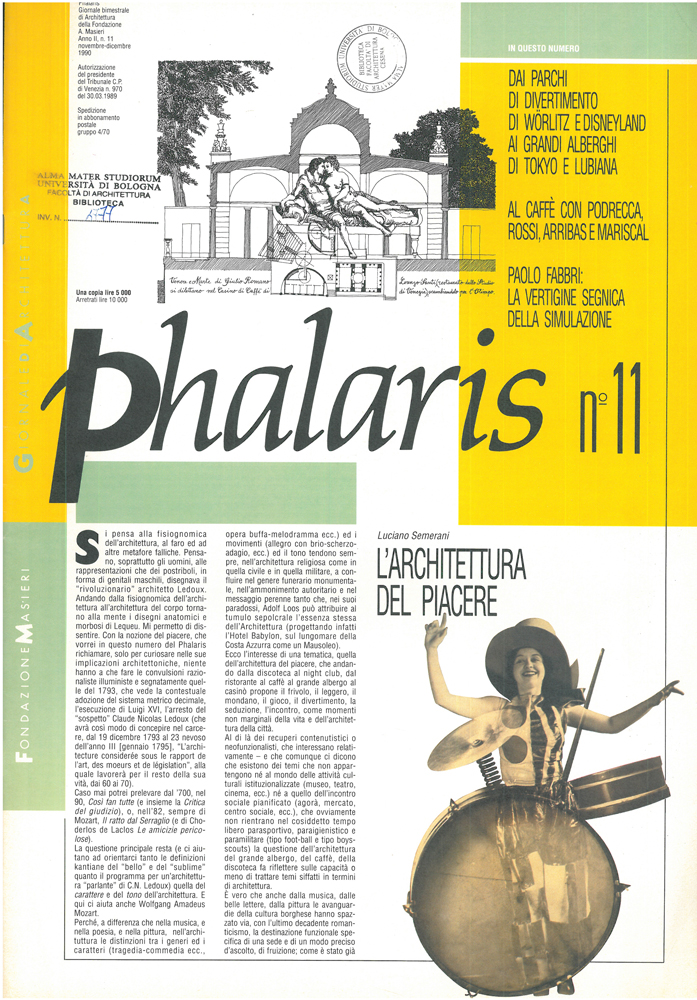

Fig.
8 - Double page (10-11) of Phalaris 11
Fig.
9 - Double page (20-21) of Phalaris 11
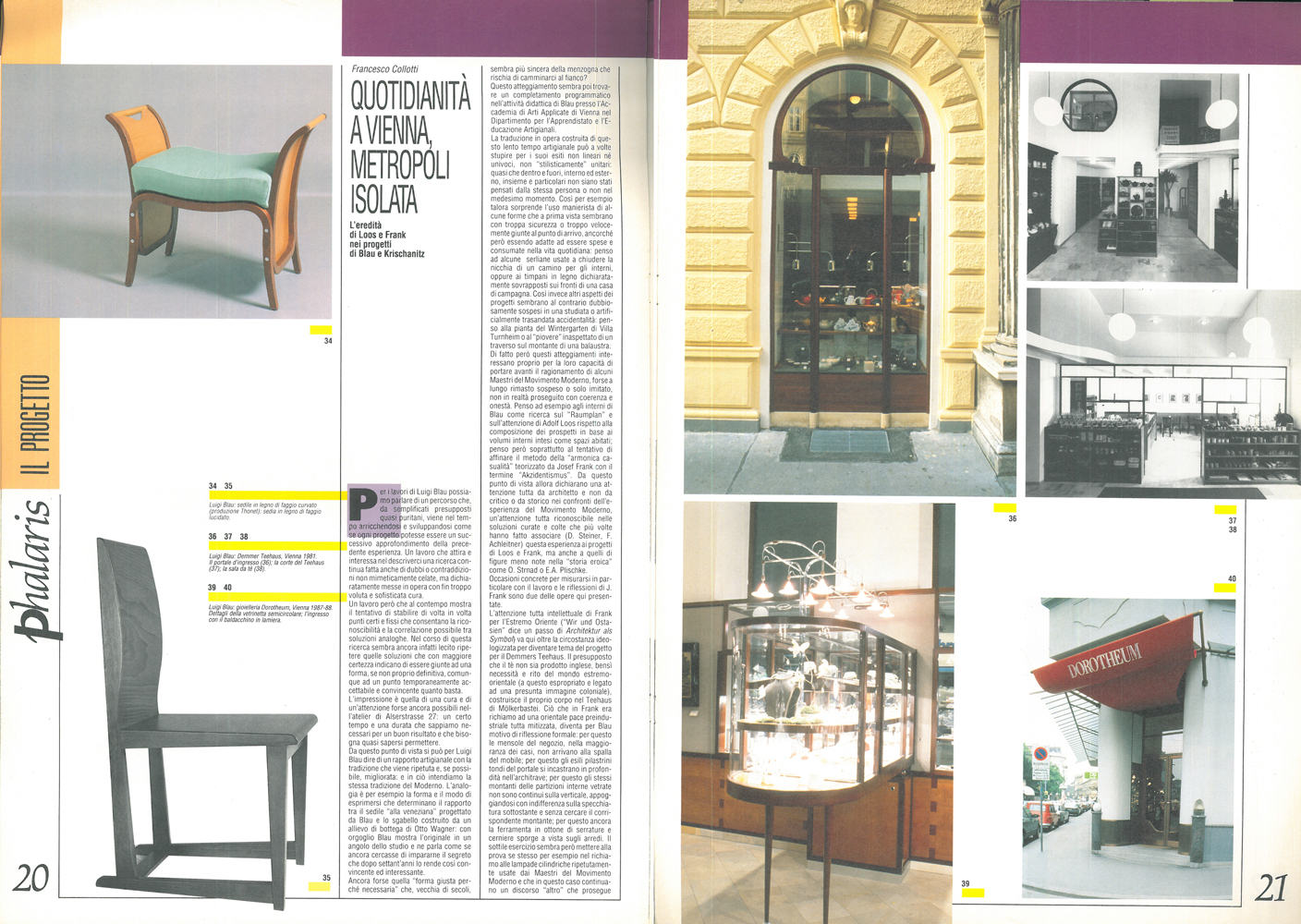
Fig.
10 - Page 11 of Phalaris 1 dedicated to the cinema
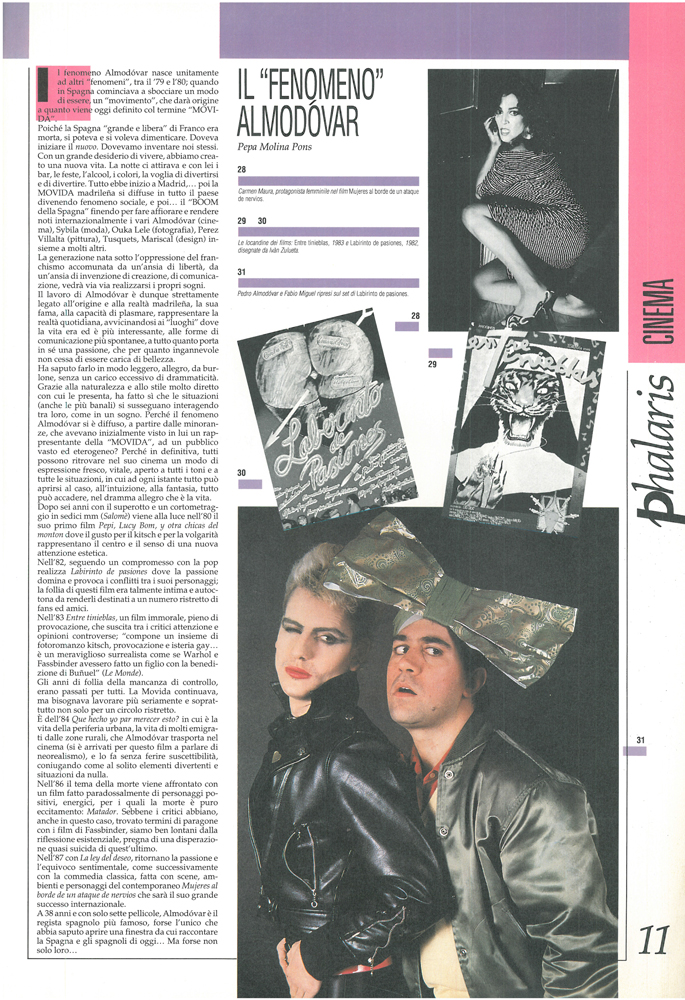
Fig.
11 - Phalaris 13 dedicated to the relationship between
USA and Europe in Architecture and other arts
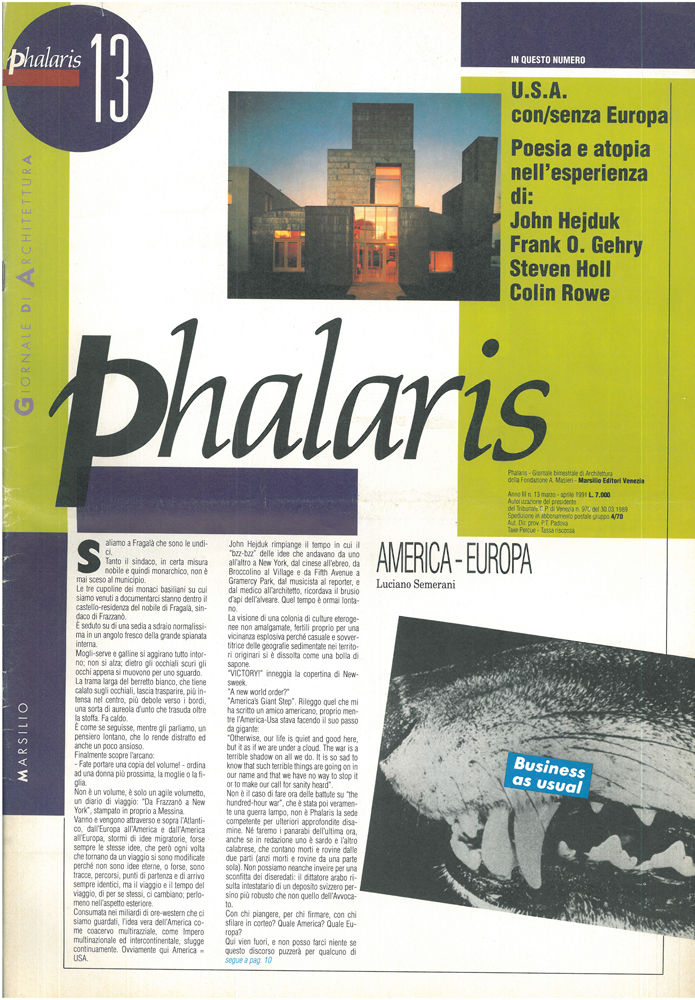
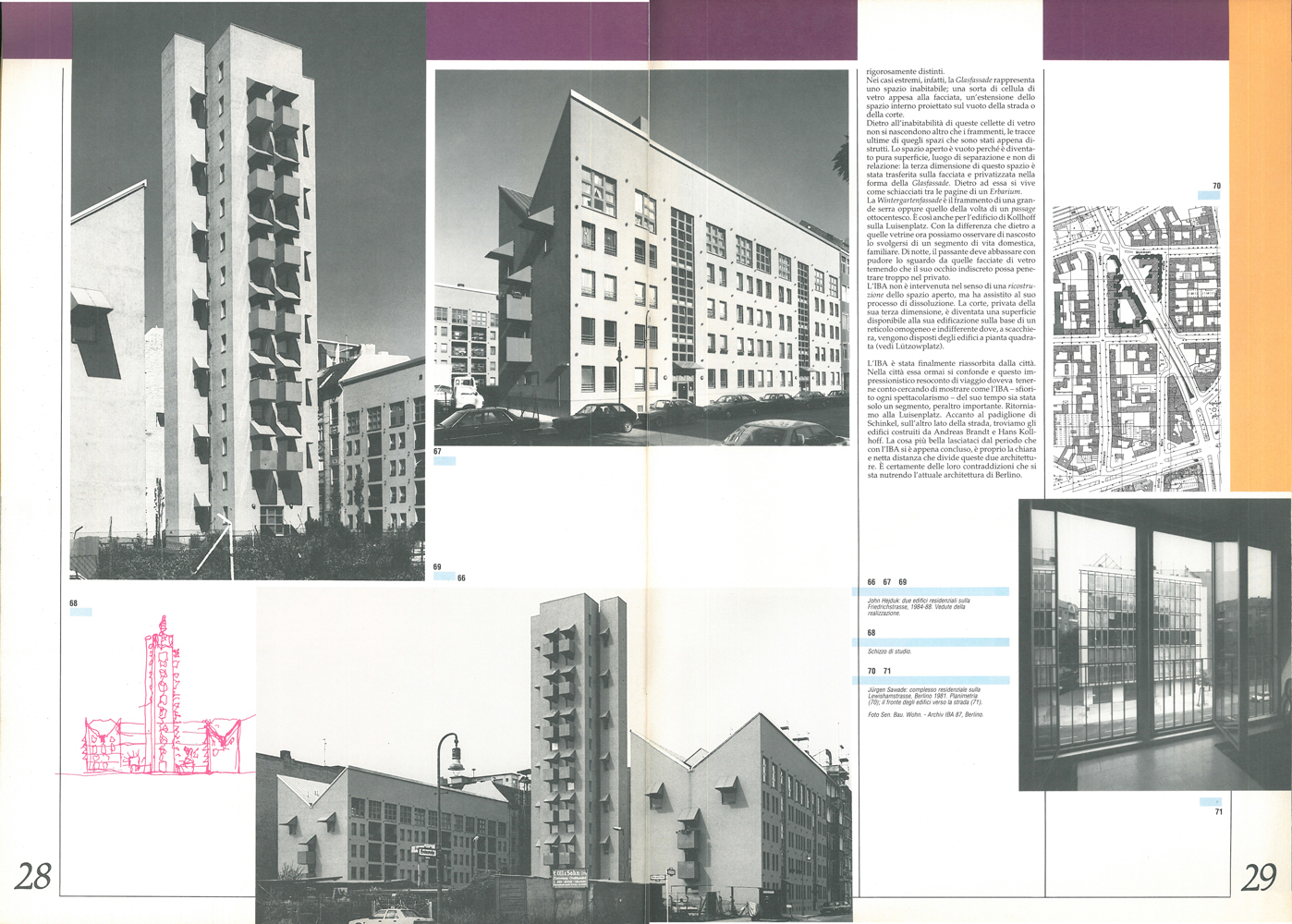
Fig.
12 - Double page (28-29) of Phalaris 13
Fig.
13 - Cover of Phalaris 15
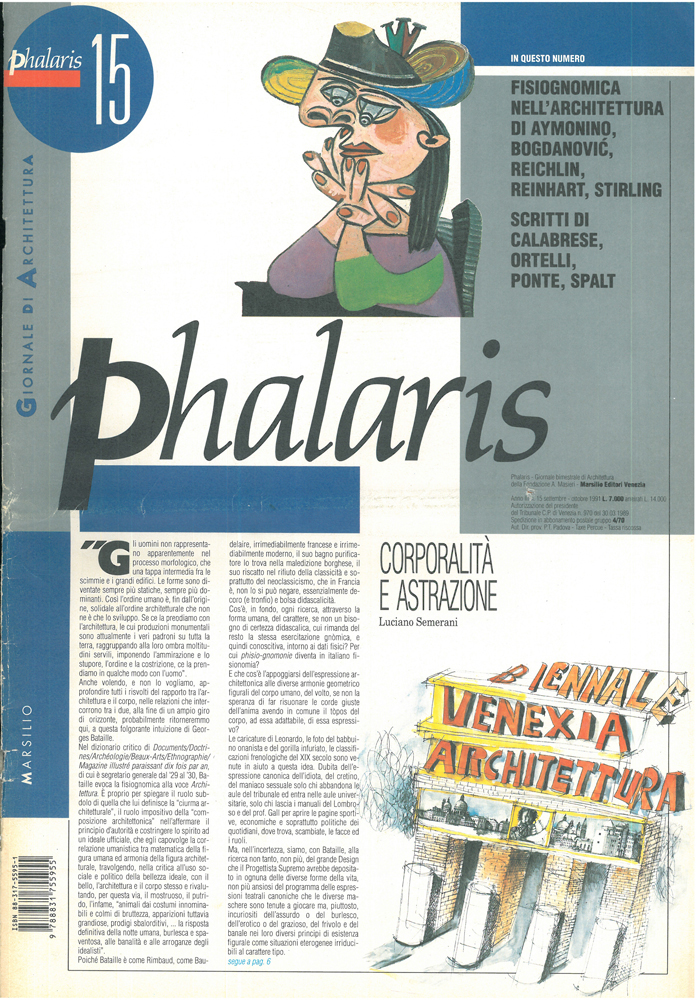
Fig.
14 - Cover of Phalaris 16 dedicated to Mediterranean
architecture
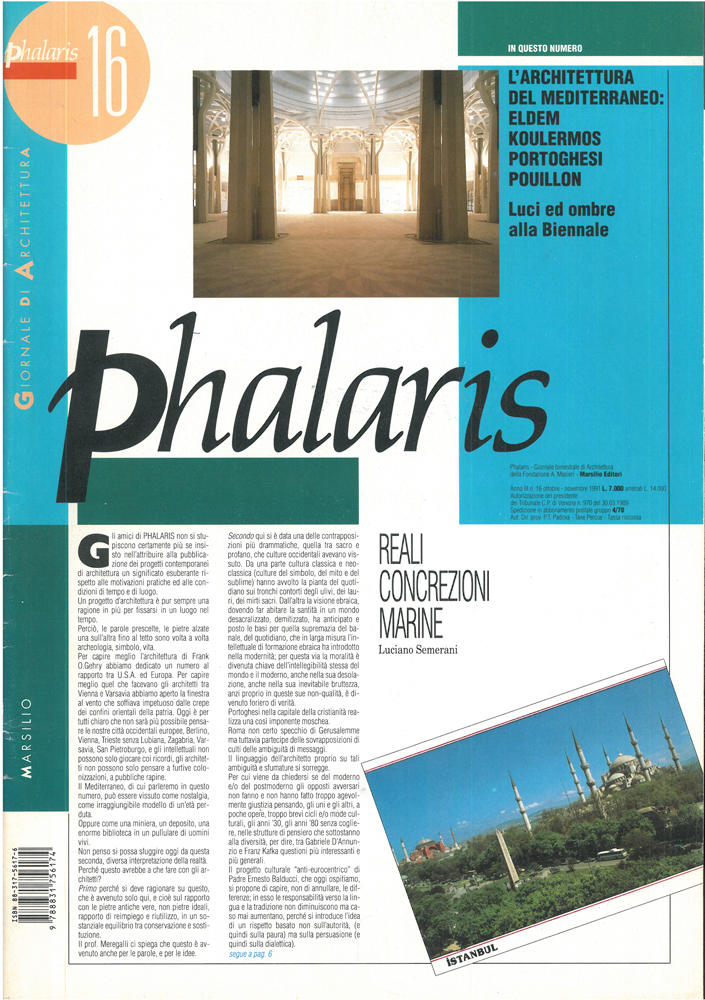
Fig.
15 - Double page (12-13) of Phalaris 16
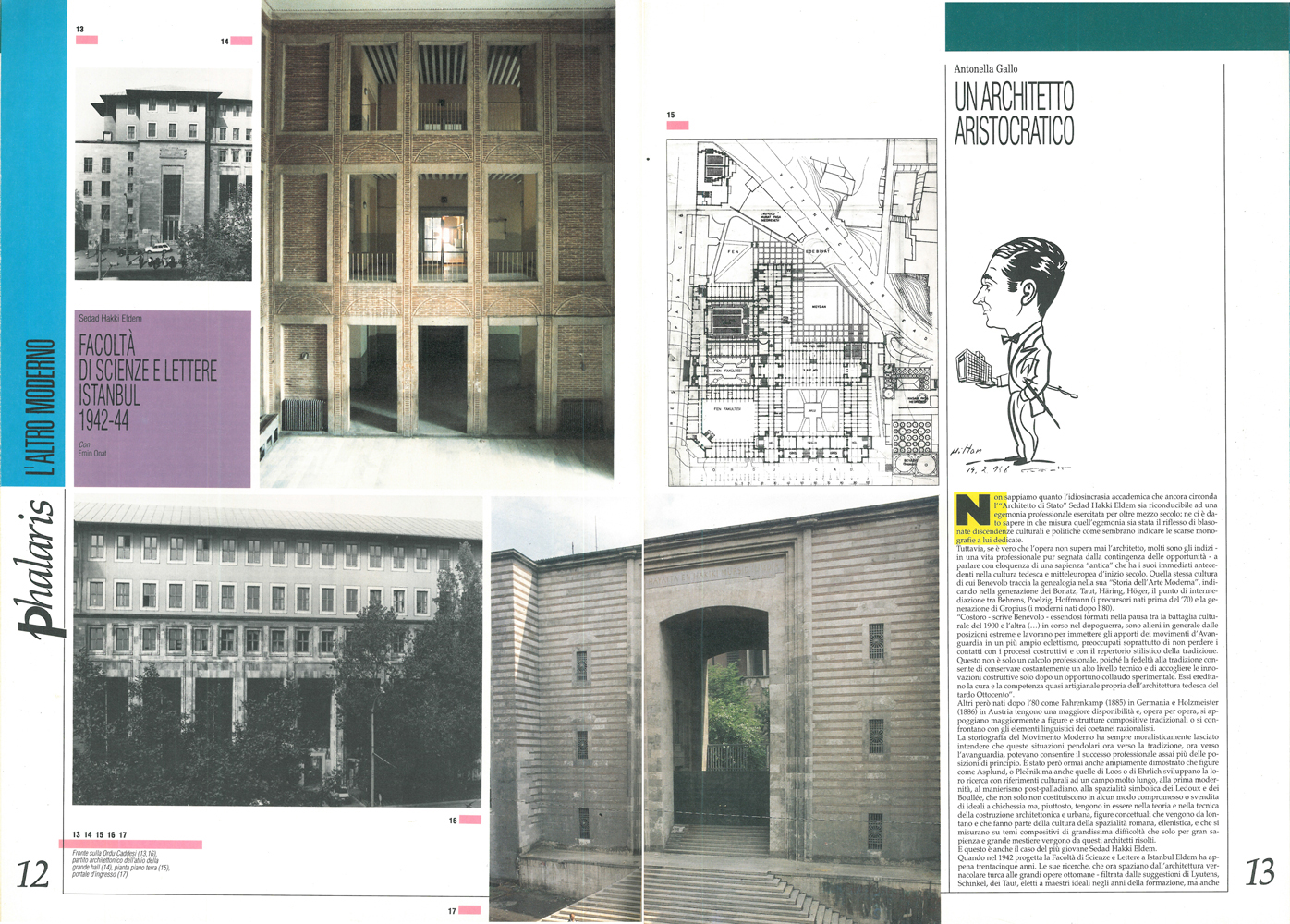
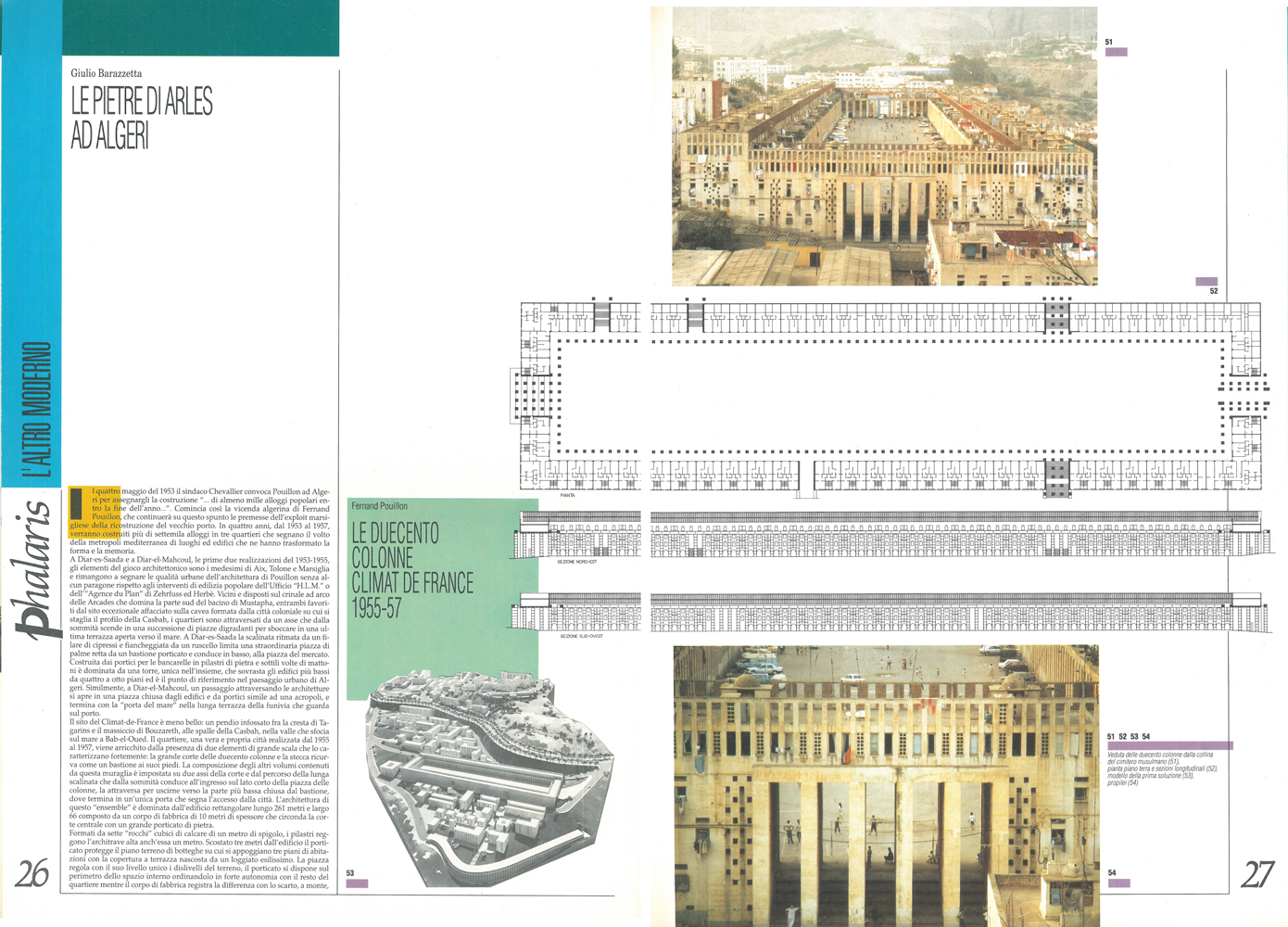
Fig.
16 - Double page (26-27) of Phalaris 16
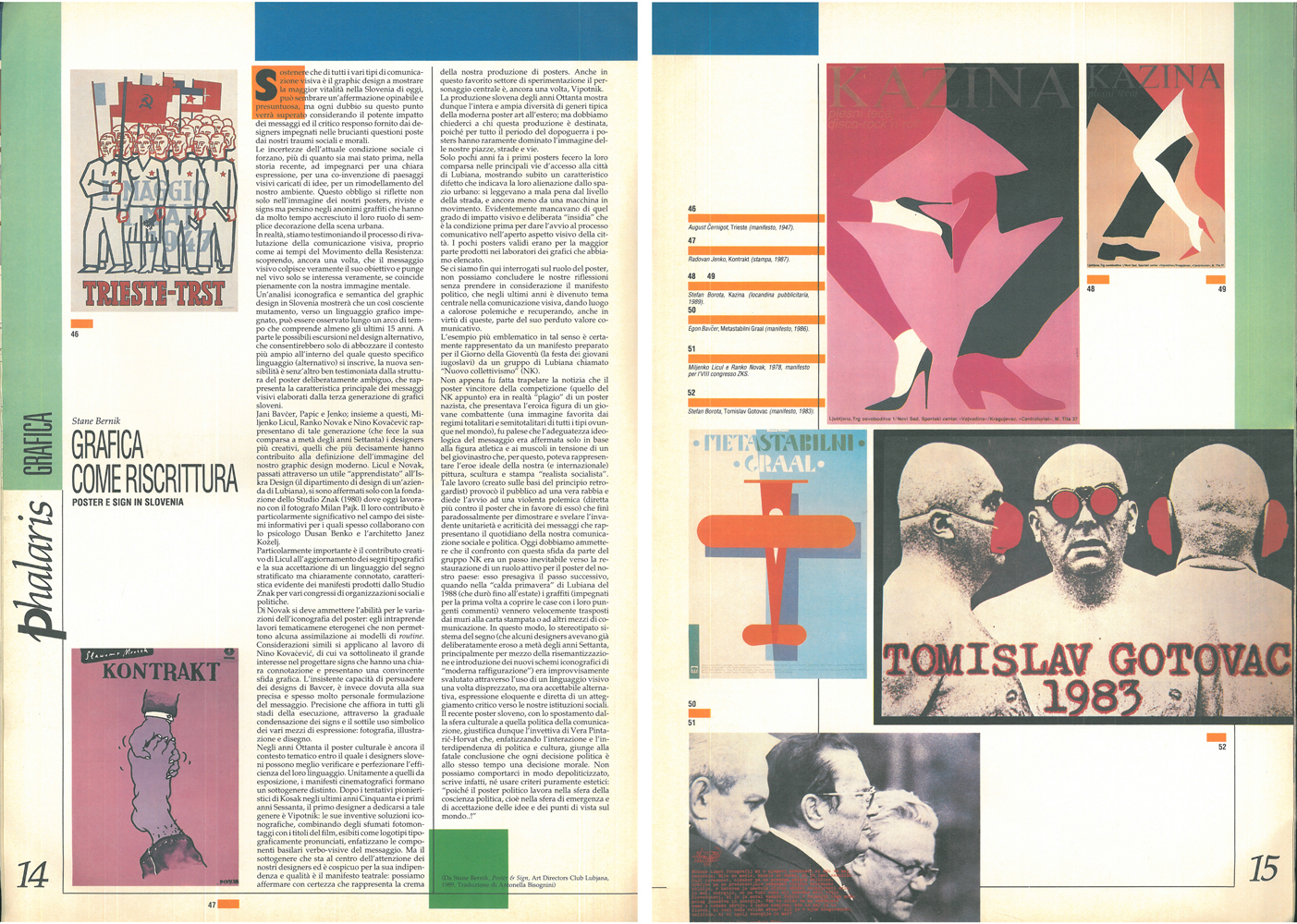
Fig.
17 - Double page of Phalaris 2